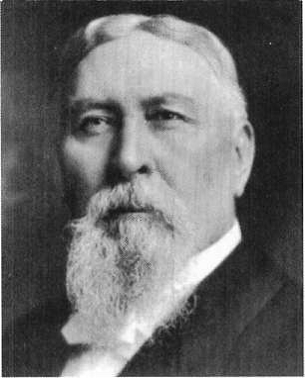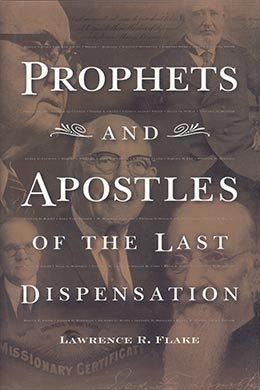John Henry Smith
Lawrence R. Flake, Prophets and Apostles of the Last Dispensation (Provo, UT: Religious Studies Center, Brigham Young University, 2001), 265–67.

Born: 18 September 1848, Carbunca (now part of Council Bluffs), Iowa
Quorum of the Twelve Apostles: 27 October 1880 (age 32)
Second counselor to President Joseph F. Smith: 7 April 1910
Died: 13 October 1911 (age 63), Salt Lake City, Utah
On a June day in 1862, apostle George A. Smith, who was in Salt Lake City, received the distinct impression that his thirteen-year-old son, John, was in grave danger. Immediately the worried father prayed to the Lord and pled with him to save the boy. At that moment, forty miles to the south, his son’s two companions, Thomas and George Brown, stood horrified on the banks of the flood-swollen Provo River, looking at a driftwood entanglement under which John Smith was trapped and drowning. In their attempt to cross the raging current, the small boat in which the three boys were riding had capsized. The Brown boys had seen John float under the driftwood several minutes before. Now they feared he was dead. All at once an unseen power lifted the boy from the waters and placed him safely on the bank.
John Henry Smith had survived the rigors of a trip across the plains when only a few months old. Now once again the Lord had spared his life for an important earthly ministry.
As a missionary and a mission president, Elder Smith powerfully bore witness of the gospel in eleven European countries. As an apostle and later as a member of the First Presidency, he traveled extensively in the United States, visiting all of the stakes of the Church. His accomplishments included contracting and completing two hundred miles of the Central Pacific Railroad, serving on the city council for six years, and being elected president of the Constitutional Convention which drew up the document under which Utah became a state of the Union in 1896. On three occasions he was sent to Washington, D.C., to allay prejudice against Utah and the Church. He was the devoted husband of two wives and the father of many faithful children, including George Albert Smith, the eighth president of the Church, and Nicholas G. Smith, who became an Assistant to the Twelve. [1]
One day while still a young man, John called upon Colonel Thomas L. Kane, a prominent American statesman, a loyal friend of the persecuted Latter-day Saints, and the man in whose honor Kanesville, Iowa, had been named. During their conversation Mr. Kane, who had been closely associated with some of the great prophets and patriarchs of this dispensation to whom John was related, told him: “Young man, I trust that you will ever remember that the best blood of the nineteenth century flows in your veins.” [2]
Notes
[1] Matthias F. Cowley, Prophets and Patriarchs of the Church of Jesus Christ of Latter-day Saints (Chattanooga, TN: Ben E. Rich, 1902), 253–60; “Some of the Activities of President John Henry Smith,” Improvement Era, November 1911, 59–60.
[2] Edwin F. Parry, “Apostle John Henry Smith,” Lives of Our Leaders: Character Sketches of Living Prophets and Apostles of The Church of Jesus Christ of Latter-day Saints (Salt Lake City: Deseret News, 1901), 130.
